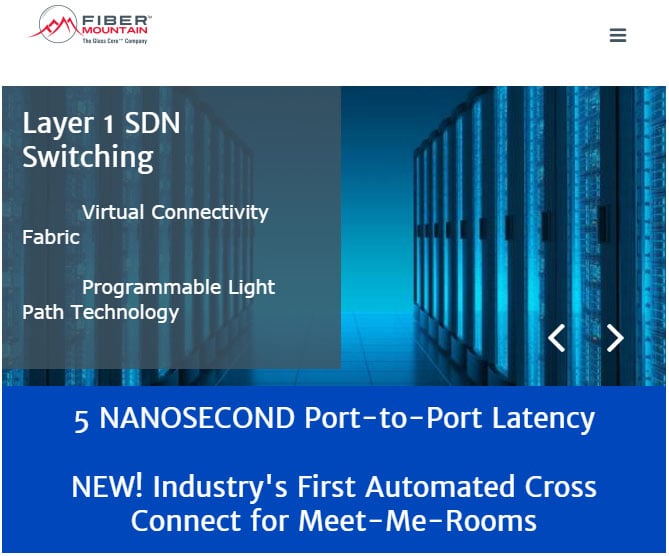Digital Transformation is About People, Processes and Meeting Business Challenges
The digital transformation is nigh, at least if you believe the hype networking companies and service providers are churning out. The term “digital transformation” is somewhat amorphous, encompassing a shift toward Web-scale network infrastructure that is impacting pretty much anyone, and anything connected to the Internet. The reality is that networks are indeed changing, along with entire business models, in a scramble to keep up with the pace of Web-scale networking and the Internet of Things (IoT).
For the networking specialists at Fiber Mountain, digital transformation is a broad concept that defines large-scale endeavors like city-wide fiber optic projects as well as hospitals and healthcare facilities that are transforming their networks and embracing virtualization. Digital transformation also refers to enterprises changing their network infrastructure to accommodate unprecedented amounts of bandwidth and traffic and even smaller-sized businesses that are taking advantage of software-defined networking (SDN) to re-architect their WANs.
Of course, digital transformation wouldn’t be possible without a complete shift in how data centers are architected, managed and interconnected. Data centers are undergoing their own digital transformation, becoming leaner, autonomous and intelligent thanks to advances in virtualization and SDN. Fiber Mountain is one of the companies enabling that transformation, providing core networking infrastructure that facilitates intelligent switching over high-density optical connections. The end result is speed and agility that can keep up with the digital transformation and the demands of web-scale networking.
From a high-level perspective, digital transformation is about finding answers to business challenges by working collaboratively with all

departments and functions within a company. Technology changes and upgrades are generally the result of this process, but by keeping the focus on answering core business challenges and meeting high-level goals and objectives, organizations can ensure they are taking the correct approach to digital transformation.
Digital transformation certainly won’t take place overnight and is best defined as a process – one designed to meet the unique business challenges of today’s web-scale networking world. By looking at all the pieces involved, from the business premises to the data center and all points in between, we can understand the necessary technology steps required to achieve a true transformation. And by focusing on people, processes and business challenges and goals, we can understand what needs to be achieved and which technological steps are necessary to make it a reality.
If you’d like to learn more about the digital transformation, be sure to check out TMC and Crossfire Media’s newest conference and expo, Communications 20/20, happening July 18-20 at Caesars Palace in Las Vegas. The event will focus on the next wave of technology and innovations that will transcend the importance of person to person contact, disrupting the future of the entire communications industry. Find out more HERE.

 By
By 

